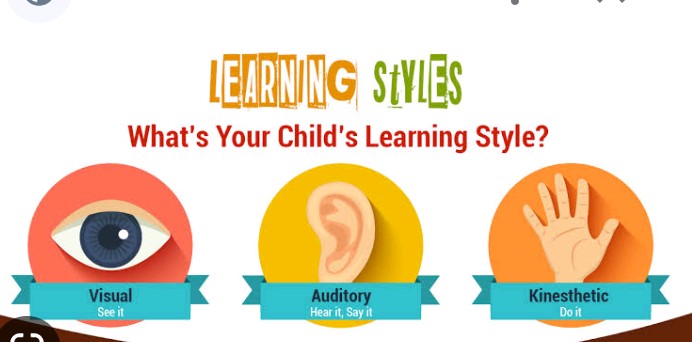Learning styles is a term that refers to different ways in which we learn, process, and retain information. All young children learn through meaningful hands-on experiences—through touching, doing, and moving. And children also learn through seeing and hearing. As you observe your child, you will begin to identify strengths and preferences that tell you something about your child’s preferred learning style.
You want to foster your child’s strengths, but remember that it helps to challenge him to grow as well. Your child can excel in a variety of areas. Therefore, offer a variety of experiences to help your child develop new strengths and interests that will broaden his or her understanding of the world.
Types of Learning Styles
These are the four main types of learning styles:
Visual (learn through seeing)
Auditory (learn through hearing)
Tactile (learn through touch)
Kinesthetic (learn through doing and moving)
Visual learners learn through seeing. Children who are visual processors tend to observe a parent’s or teacher’s body language and facial expressions for content and learn through demonstrations and descriptions. They tend to have well-developed imaginations and often think in pictures. Too much movement or action in a classroom may cause distraction for them. For older children who read, written instructions may help clarify verbal directions.
Auditory learners learn through listening. Children who are auditory processors learn through participating in discussions and talking things through. Verbal directions may help clarify instructions or written information. Too much noise may be distracting and children with this strength may learn best in a quiet environment.
Tactile learners learn through touch. Children who are more tactile prefer activities or projects that allow them to use their hands. Your child may prefer doodling or drawing to aid memory.
Kinesthetic learners learn through moving and doing. Children who are more kinesthetic learn through physical sensations and may have trouble sitting still for long periods. A hands-on approach that allows your child to actively explore her physical world helps her learn best.
How Can You Determine a Child’s Learning Style?
The best way to learn about a child’s learning style is to observe what he or she is doing. Actions, interests, and preferences will provide information about how he or she is processing information.
All children, even the most challenged, have interests and preferences. Identifying these helps increase a child’s motivation for learning.
